A Geminid meteor above the Montana Rockies in 2017 [Buy Photo]
The Geminid meteor shower is consistently the best one of the year. With a zenithal hourly rate (ZHR) of up to 120 meteors on one of the longest nights of the year, conditions don’t get much better for seeing shooting stars. Because it’s in the middle of December, it is not as widely viewed as the August Perseids. Cold temperatures and cloudy weather makes it a challenge to observe. But if you have clear skies in the forecast, it’s definitely worth making the effort to see.
Source
Geminid meteors originate from a 5km wide asteroid called 3200 Phaethon. This makes it unique because all other meteor showers are known to come from comets instead. 3200 Phaethon’s orbit brings it closer to the sun than any other named asteroid. As it swings around the sun, it sheds tiny pieces of dust and debris. When Earth encounters this debris, the pieces enter our upper atmosphere where they will burn up. Most meteoroids as they’re known are surprisingly only the size of a grain of sand. But they leave behind bright trails of light because of their extreme velocity (35 kilometers a second). Unlike other meteor showers which have been observed for many hundreds of years, Geminids were first seen in 1862. Since then, the numbers have only increased. It wasn’t until 1983 that the source of the meteor shower was finally discovered. Geminids appear to radiate from the constellation of Gemini, hence their name. But you don’t necessarily have to know where Gemini is to enjoy the show, since meteors can appear anywhere in the sky.

Geminids fly through a moonlit sky above the Gulf of Mexico in 2014. [Buy Photo]
Viewing Location
Meteor showers are one astronomical event that is highly affected by light pollution. Under a city sky you may only see a handful of the brighter meteors. But from a dark sky the meteor rates increase greatly. Check out the list of dark sites or use the light pollution map to find your own spot. Look for a place with a wide open view of the sky without trees, hills, buildings, etc. in the way. The northern hemisphere will have a better view because the radiant Gemini rises higher in the sky. The southern hemisphere will see a reduced numbers of shooting stars, but still a decent show.
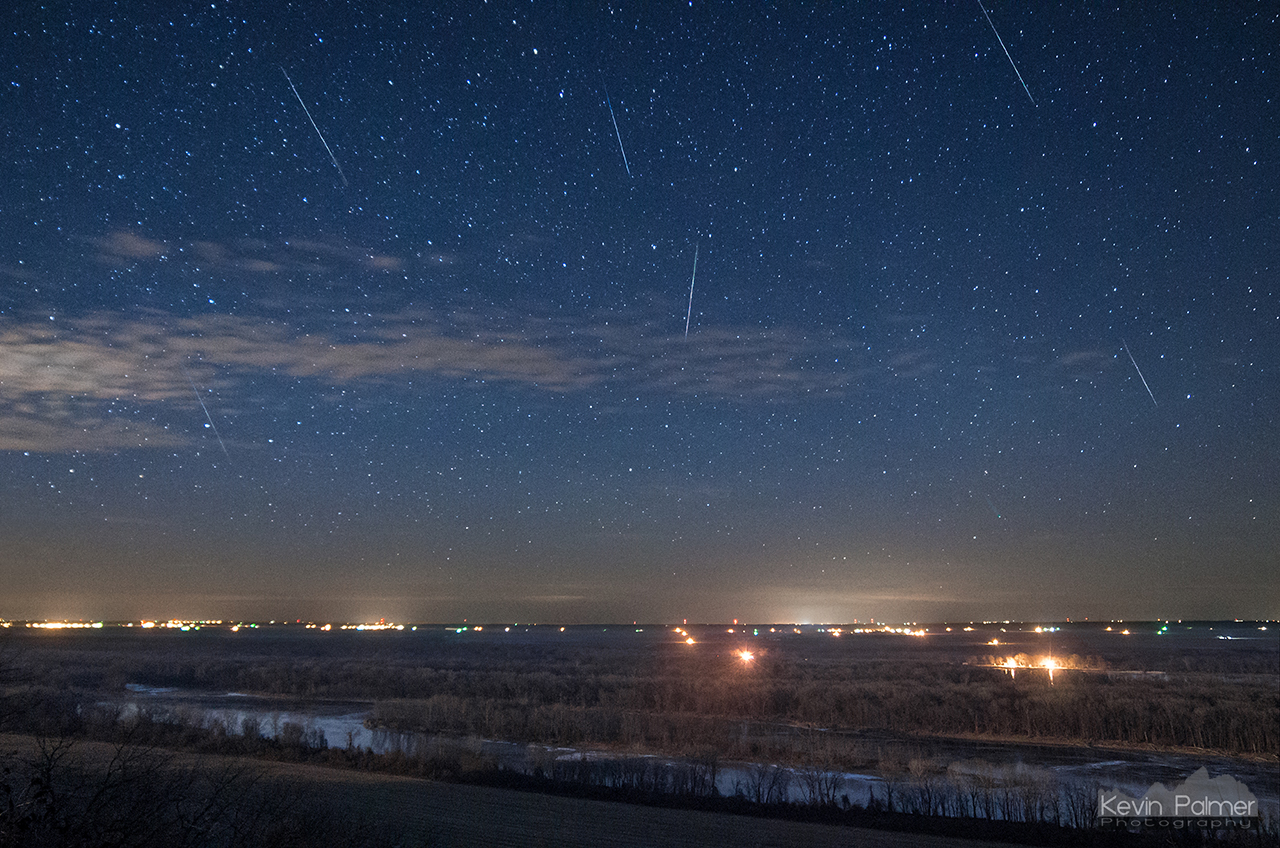
6 meteors slice through the eastern sky as seen from a bluff in Missouri overlooking the Mississippi River. [Buy Photo]
When to Watch
The maximum peak will be on the morning of the 14th. The absolute best time will be at 12:30 UTC. But unlike other meteor showers, there will still be a good number to be seen earlier in the evening as well. Reduced rates of Geminids can be seen anytime from December 4th-17th. While meteor numbers vary from year to year, the biggest factor is usually moonlight. The moon won’t be much of a problem in 2018. The waxing 35% moon will set by 11PM in most places. That leaves the rest of the night free of moonlight which makes it ideal for seeing meteors.

An early Geminid meteor over Spring Lake, Illinois
Other Viewing Tips
-
- Bring plenty of warm clothes, blankets, a sleeping bag, etc. It always seems extra cold when stargazing because you’re not moving around very much.
- Bring hot drinks and snacks, they’ll help you stay out longer. December nights are very long.
- Try laying on your back so you can take in as much of the sky as possible. A camping chair that reclines or a blanket is best for this.
- Watch for at least 1 hour. Your eyes take some time to adapt to the darkness before you’ll get the best view and be able to see the fainter meteors.
- Have patience. Sometimes the meteors come in spurts. You might see none in 10 minutes and then see 10 in 1 minute.
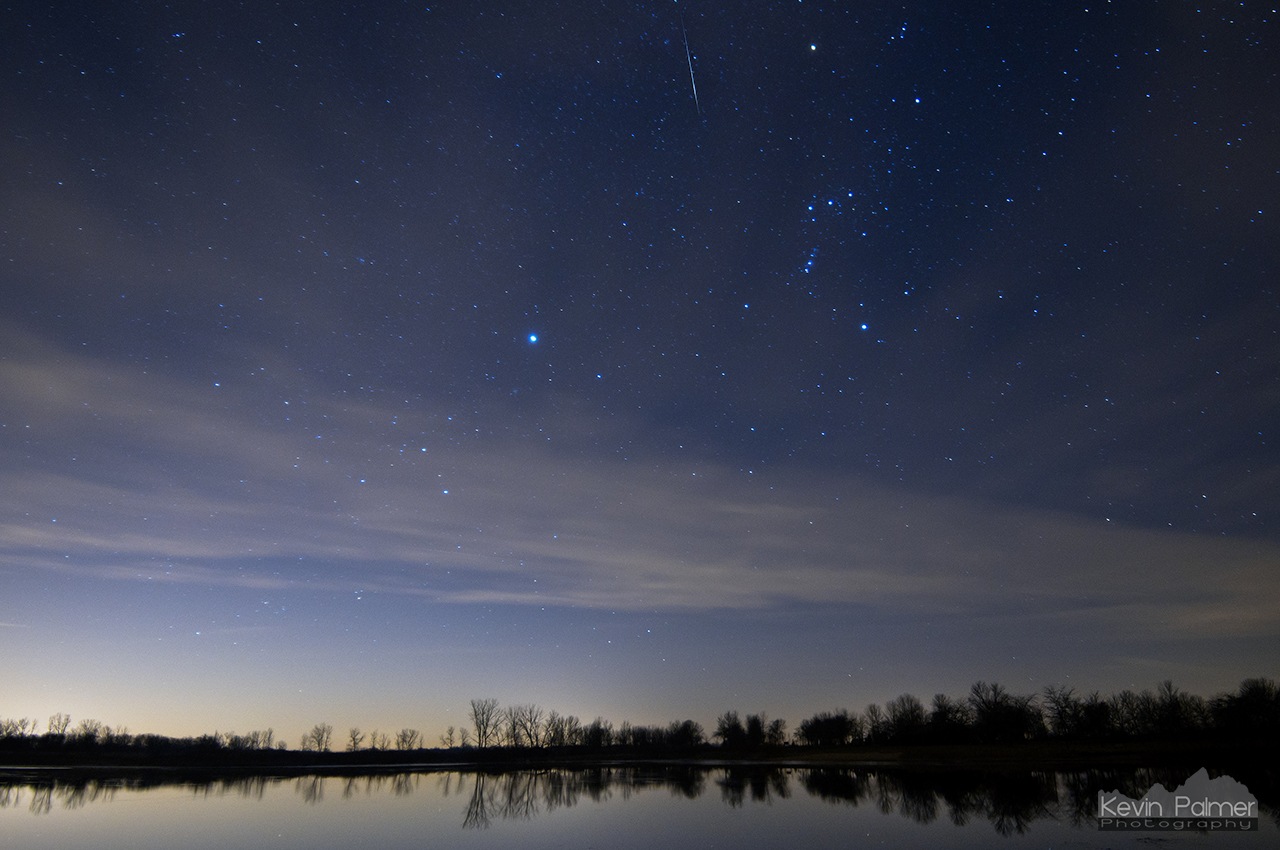
A meteor appears near the constellation Orion as seen from Richard Bong State Recreation Area.
Photography Tips
Because shooting stars are random and can appear anywhere in the sky, meteor photography is all about maximizing your chances. This means taking as many pictures as possible, using your widest lens. Even better is if you have two cameras and can point them in different directions. Make sure you have extra batteries and they are fully charged. Clear your memory cards ahead of time so there’s plenty of space. Here are some suggested camera settings:
- Set focus to infinity (∞). You may need to use live view to zoom in on a bright star and really nail down the focus.
- Use the widest aperture on your lens or stop it down slightly. Set the exposure to around 30 seconds, and use a high ISO such as 6400. This may need to be adjusted based on the darkness of your sky.
- Use an interval timer to take continuous exposures. This may be an external device, built into your camera, or even controlled via a phone app.
- Make sure your tripod is secure and won’t blow over. If there’s a lot of moisture in the air, attaching hand warmers to your lens hood will help keep dew and frost off the glass.
You will probably see more meteors than you actually photograph. The human eye can detect the motion of dim meteors better than a camera sensor can. But the brighter fireballs and bolides can make for some amazing pictures. Good luck!
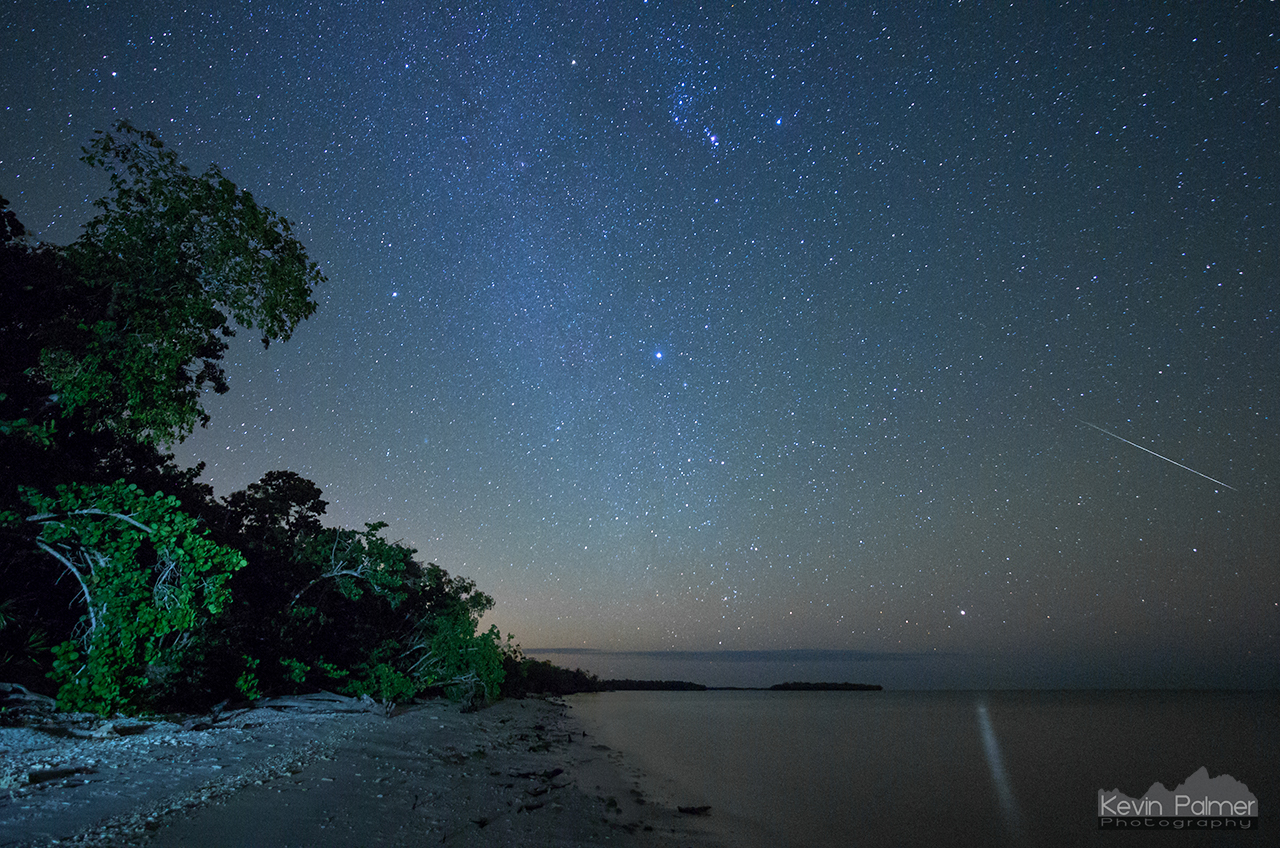
Picnic Key in Everglades National Park made for a perfect viewing location. [Buy Photo]
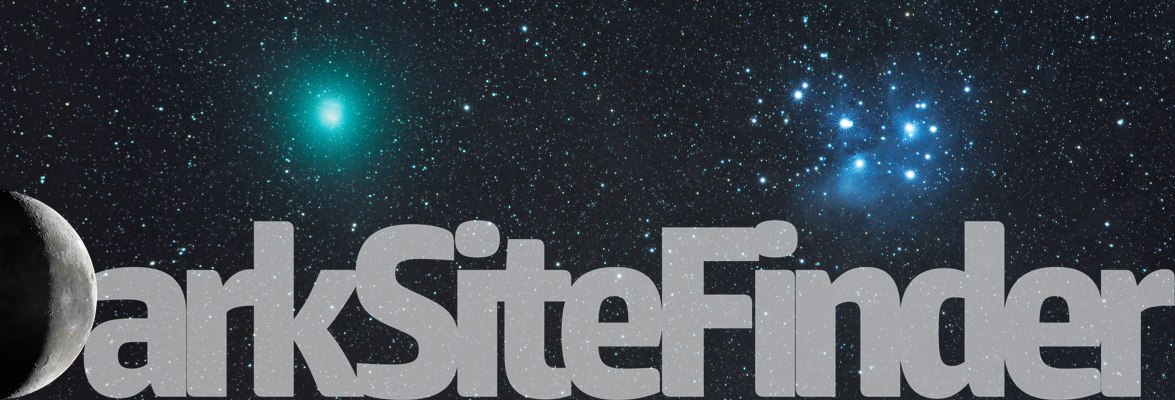
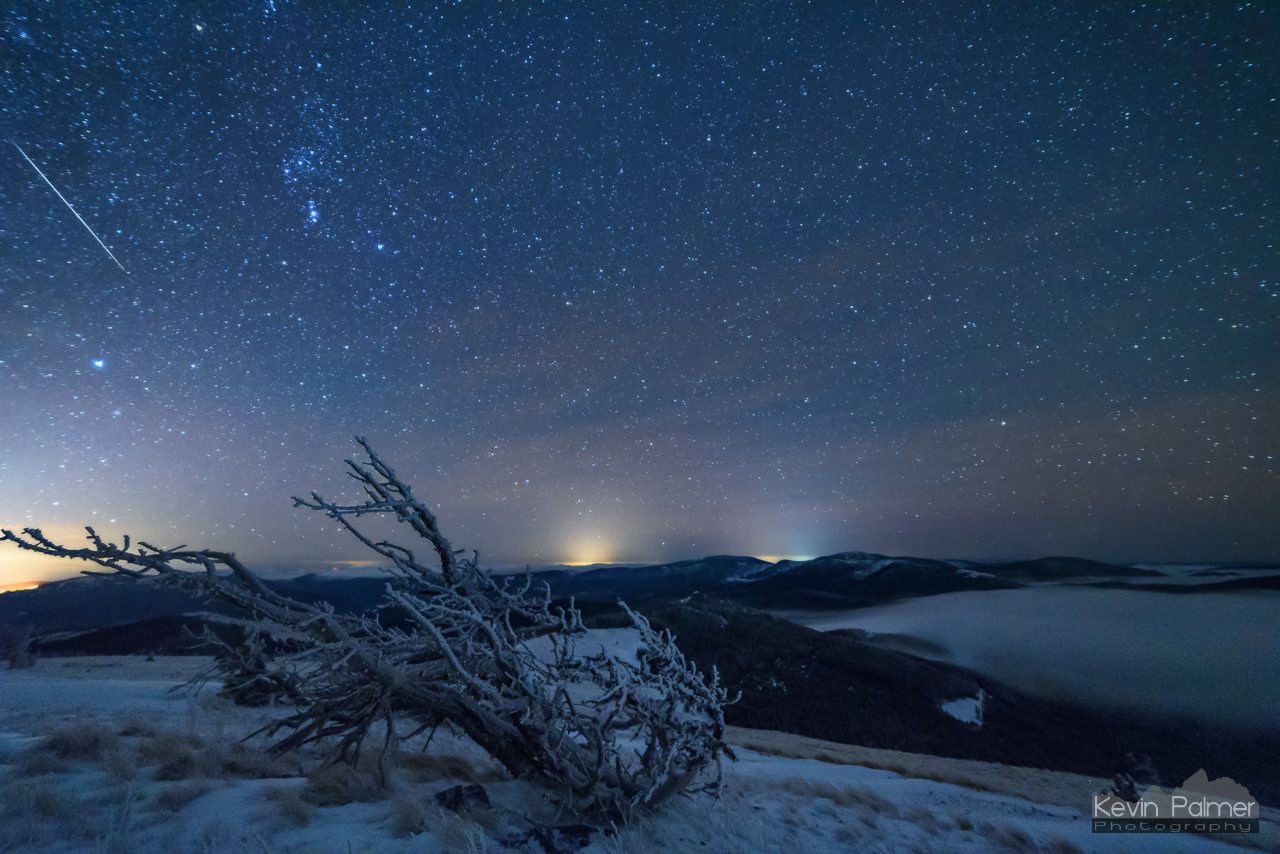
Permalink
Awesome post Kevin. Very informative with outstanding pictures. Keep up the good work.